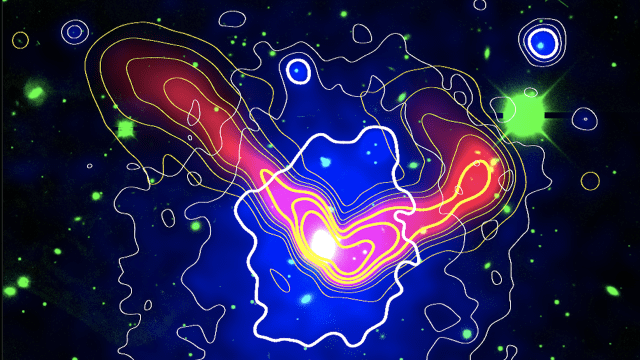CSIRO has given us a little treat this week – they’ve uploaded 10 of their favourite images collected through ASKAP data. Of course, whatever medium you’re viewing this article on won’t do them justice, but these images are incredible and need to be shared, nonetheless.
But before we see the ASKAP pics, you should probably know what exactly the ASKAP is. Firstly, ASKAP stands for Australian Square Kilometre Array Pathfinder. The ASKAP is a a radio telescope array located at Murchison Radio-astronomy Observatory in the middle of Western Australia.
ASKAP has 36 ‘dish’ antennas that work together as one telescope. The antennas stand three storeys tall, each with a 12-metre-wide dish, and they are dotted across the outback over an area of about six square kilometres.
The ASKAP is one of the precursor instruments to the Square Kilometre Array (SKA), an international project to build the world’s largest radio telescope. The SKA project will consist of thousands of antennas spread across the world, with central cores of operation in South Africa and Western Australia.
The SKA will eventually use thousands of dishes and up to a million low-frequency antennas that will enable astronomers to monitor the sky in unprecedented detail and survey the entire sky much faster than any system currently in existence.
Telescopes like ASKAP provide a big picture view of the Universe.
Cool, right?
OK, here are the top 10 images from ASKAP
ASKAP image 10: Polarised intensity around a supernova remnant
From the POSSUM survey science team.
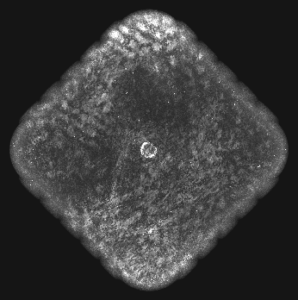
This image shows the polarised emissions from gas clouds, interstellar dust and background galaxies. The shell in the centre is the supernova remnant (the remaining shock wave of gas long after a star has exploded).
CSIRO says by looking at the patterns of the polarised gas, researchers hope to understand the magnetic fields at play in this part of our Galaxy.
ASKAP image 9: Orbiting patterns of galaxies in the Hydra cluster
From the WALLABY survey science team.
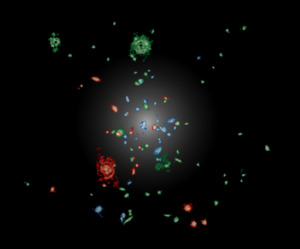
In this image, data from the gas shows the movement of galaxies in the Hydra galaxy cluster. The white haze represents the density of hot intra-cluster gas and dust that is typical of massive clusters. The galaxies’ colour represents their orbital movement within the cluster. CSIRO explains: red galaxies are moving away from us, blue is moving towards us and green is in between!
ASKAP image 8: The SWAG-X region
From the ASKAP itself.
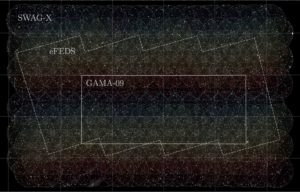
As CSIRO explains, windows into the extragalactic Universe are mapped with different telescopes on Earth and in space. These surveyed areas allow researchers to explore and understand the Universe in X-ray, optical, infrared and other wavelengths simultaneously. This image of SWAG-X is one of those regions.
ASKAP image 7: Galaxy running towards collision
From the EMU survey science team.
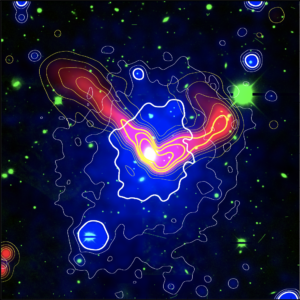
An international team combined data from ASKAP, SRG/eROSITA, XMM-Newton and Chandra satellites and DECam optical images and what they discovered was a large galaxy with a black hole at its centre, moving at high speed.
The red streaming gas, CSIRO says, shows this movement.
ASKAP image 6: Spinning in space
From the WALLABY survey science team.

Colour often describes density or temperature variations, however, as we can see in this image, colour is all about movement. This is a map of galaxies that indicates how each individual galaxy is moving. As CSIRO explains, blue means it is rotating towards us, red away.
ASKAP image 5: Spot the mysterious signal
From the VAST survey science team.
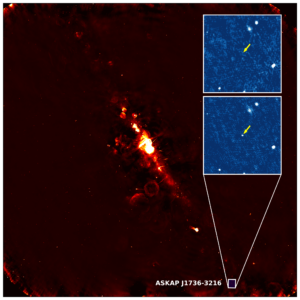
CSIRO is calling this “one of our biggest astronomy stories for 2021”. It saw ASKAP detect a mysterious signal coming from the centre of our Milky Way. This image with pull-out shows the position and sudden appearance of the signal.
ASKAP image 4: Dancing Ghosts
From the EMU survey science team.
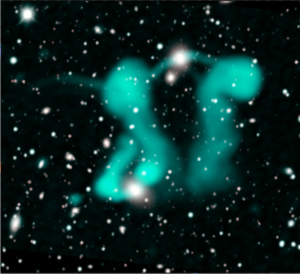
In another mystery, ASKAP spotted these two ‘dancing ghosts’.
However, CSIRO said the ‘ghosts’ are really just clouds of energetic particles spewing from the black-hole centres of two galaxies. But, the shape of these clouds does not fit into researchers’ typical models. Therefore, there must be other forces at play. CSIRO said researchers are yet to determine what they are.
ASKAP image 3: Galactic Plane
From the EMU survey science team.
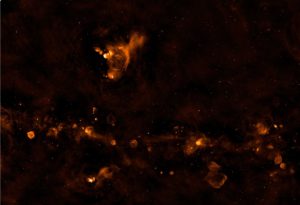
Studying the Galactic Plane is an essential objective for astronomers, as it’s where our Solar System resides alongside millions of stars, dust and gas clouds, plus dark matter. This was ASKAP’s first view of a small portion of the Galactic Plane.
CSIRO said the team discovered more than 3600 compact radio sources – many of which had never been seen before. Even more amazing, this data was acquired by only 15 of ASKAP’s 36 antenna. There will be even greater things to discover now that all 36 antennas are operating together. Love to see it.
ASKAP image 2: Large Magellanic Cloud
From the Early Science survey science team.
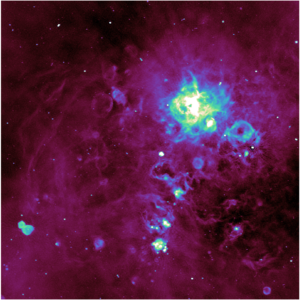
The early science projects were all about finding out what ASKAP could achieve, CSIRO says. And after a year of processing, new images of the Large Magellanic Cloud were unveiled, including this one of the Tarantula Nebula and its surrounds.
CSIRO says these images provide a benchmark for researchers to study in greater detail how stars form and how galaxies are structured.
ASKAP image 1: Small Magellanic Cloud with filaments
From the GASKAP-HI survey science team.

Coming in first position (and understandable why), this is the best image yet of our neighbouring galaxy in radio waves.
It was created by data from both ASKAP and Parkes (Murriyang) radio telescopes. The GASKAP-HI team are now mapping the filament structure of the galaxy’s gas from the data. This will tell us more about where and how stars form. And perhaps why this galaxy is such an irregular shape, CSIRO adds.
CSIRO says these images are just the beginning of many research projects and that from here, teams will analyse the data further to discover even more about our Universe.
